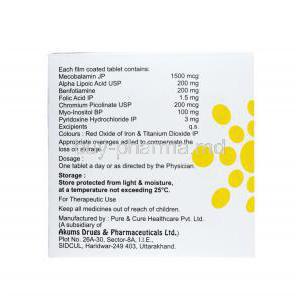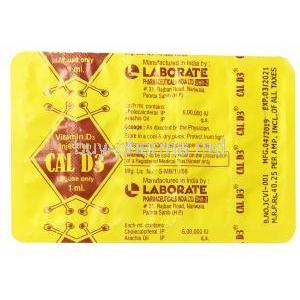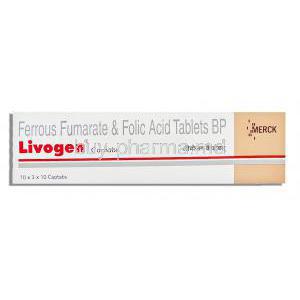Fortinerv
- I. Introduction to Fortinerv
- II. Composition of Fortinerv
- III. Mechanism of Action: How Fortinerv Works
- IV. Comprehensive Uses of Fortinerv
- V. Dosage and Administration Guidelines
- VI. Side Effects and Adverse Reactions
- VII. Important Precautions and Warnings
- VIII. Special Considerations in Diverse Populations
- IX. Overdose and Management
- X. Storage and Handling Precautions
- XI. Patient-Centered Care and Administration
I. Introduction to Fortinerv
Overview of Fortinerv: Fortinerv plays a role in neurological treatments, offering hope to those with complex neurological disorders. It is known for its combination of active ingredients.
Historical Approval: The journey of Fortinerv from a concept to a widely recognized therapeutic solution has been marked by groundbreaking research and extensive clinical trials. Its approval by health authorities signifies a milestone in medical innovation.
Scope of the Article: This article aims to explore the facets of Fortinerv, including its composition, mechanism of action, and a wide range of applications. It will also discuss guidelines for administration and potential side effects.
II. Composition of Fortinerv
Fortinerv is a medication that contains Alpha Lipoic Acid (200 mg), Benfotiamine (200 mg), Chromium Picolinate (200 mcg), Folic Acid (1.5 mg), Methylcobalamin (1500 mcg), Myo Inositol (100 mg), and Vitamin B6 / Pyridoxine (3 mg) 1.

III. Mechanism of Action: How Fortinerv Works
Pharmacodynamics: Understanding Fortinerv's properties helps show how it interacts with biological targets and brings about its therapeutic effects.
Pharmacokinetics: Investigating the pharmacokinetics of Fortinerv allows us to explore factors such as absorption, distribution, metabolism, and excretion. These factors play a role in determining the effectiveness and safety of the medication.
Therapeutic Effects: By combining the pharmacokinetic profiles of Fortinerv, we can observe how it significantly improves patients' quality of life through its therapeutic effects.
IV. Comprehensive Uses of Fortinerv
It is used to treat diabetic neuropathy, diabetic nephropathy, diabetic retinopathy, cardiovascular disease, and alcoholic neuropathy 123.
Here are some references that provide more information on Fortinerv:
V. Dosage and Administration Guidelines
Standard Dosage Suggestions: The recommended dosage of Fortinerv is specifically designed to achieve the possible treatment results while minimizing any potential side effects.
Adjusting the dosage in populations such as older individuals or those with additional medical conditions is essential to ensure safety and effectiveness.
To maximize the benefits of Fortinerv and prioritize patient well-being, it is essential to follow proper administration techniques and adhere to best practices.
VI. Side Effects and Adverse Reactions
Potential Side Effects of Fortinerv: Although Fortinerv is generally well tolerated, some patients may experience side effects.
These side effects are typically temporary. It can be managed effectively.
- Uncommon but Serious Adverse Reactions: There is a possibility that a few patients may encounter severe but rare adverse reactions. It is essential to monitor such cases.
- Dealing with Side Effects: It is essential to adjust the dosage and provide supportive care to address the side effects. This approach ensures patient comfort and safety.

VII. Important Precautions and Warnings
Contraindications: People who should avoid using Fortinerv include populations due to potential health risks.
Drug Interactions; The interaction between Fortinerv and other medications can be risky, so it is essential to manage medication use Special Precautions in Specific Populations. Certain populations, like women or individuals with specific health conditions, need to take extra precautions when using Fortinerv.
VIII. Special Considerations in Diverse Populations
Administration to the Elderly
When administering Fortinerv to individuals, it is essential to consider the changes in how their bodies process and respond to the medication. This is because aging can affect how drugs are absorbed, distributed, metabolized, and eliminated in the body. To ensure effective use of Fortinerv in geriatric patients, it may be necessary to adjust dosages to account for their increased sensitivity. It is also essential to consider any other medications they may be taking at the same time due to potential interactions or side effects that can arise from polypharmacy.
Use in Pregnant Women and Nursing Mothers
The use of Fortinerv in women and nursing mothers requires careful consideration of both the mother's health and the safety of the fetus or newborn. Healthcare providers should carefully assess the advantages versus risks, considering whether the drug can pass through the placenta or be present in breast milk. It is crucial to provide counseling about these risks to ensure informed consent.
Pediatric Use: Safety and Efficacy in Children
Administering Fortinerv to pediatric patients poses challenges. It is crucial to calculate dosages meticulously, considering their age and weight. Furthermore, it is essential to have an understanding of the drug's safety profile because children's responses to medications can vary significantly from adults. Continuous monitoring for any effects is necessary to prioritize the safety of children.
IX. Overdose and Management
Recognizing Symptoms of Overdosage
Recognizing the signs of an overdose of Fortinerv is crucial for taking action. The symptoms may vary from discomfort to more severe reactions depending on the dosage and how sensitive the individual patient is. Awareness of these symptoms and quickly identifying them can make a difference in saving lives.

Immediate Actions and Antidotes
If someone takes too much Fortinerv, it is essential to seek immediate medical help. Healthcare professionals will provide treatment, including specific antidotes if available, and offer supportive care to manage the patient's condition. Healthcare providers need to adhere to established guidelines for handling cases of overdose.
Long-Term Management of Overdose Cases
Continuous monitoring and potential adjustments to treatment are crucial for the management of patients following an overdose. This approach aims to support their recovery, prevent occurrences, and address any underlying factors that may have contributed to the overdose.
X. Storage and Handling Precautions
Proper Storage Conditions
To ensure that Fortinerv is effective and safe, storing it correctly following the recommended conditions is essential. Factors like temperature, light, and humidity can significantly influence the stability of the medication. Patients should be informed about the storage procedures for the drug.
Handling and Disposal Guidelines
It is crucial to handle and dispose of Fortinerv safely to prevent any exposure or contamination of the environment. Patients should be clearly informed about the methods, for disposing of unused or expired medication.
Stability and Shelf Life
Healthcare providers and patients need information about the stability and shelf life of Fortinerv under certain conditions. This knowledge helps ensure that the medication remains effective and safe throughout its intended duration of use.
XI. Patient-Centered Care and Administration
Educating Patients for Better Compliance
Education plays a role in providing patient-centered care, particularly regarding medication management. By providing patients with guidance on using Fortinerv correctly explaining its advantages and possible side effects, we can significantly improve treatment adherence and overall outcomes.

Monitoring and Follow-Up Recommendations
Monitoring and staying in touch with patients is crucial as part of providing excellent healthcare. These actions are necessary for evaluating how well the medication is working and how well it is being tolerated, allowing for adjustments to the treatment plan if necessary.
Role of Healthcare Providers in Safe Administration
Healthcare professionals play a role in guaranteeing the secure use of Fortinerv. This involves conducting assessments of patients, administering accurate doses, carefully monitoring for any side effects, and offering clear guidance and assistance throughout the treatment journey. To summarize, effectively helping Fortinerv necessitates an approach that considers the specific requirements of various populations, ensures proper handling and storage, and prioritizes patient-focused care. This comprehensive strategy highlights the significance of customized healthcare in attaining the treatment results.















